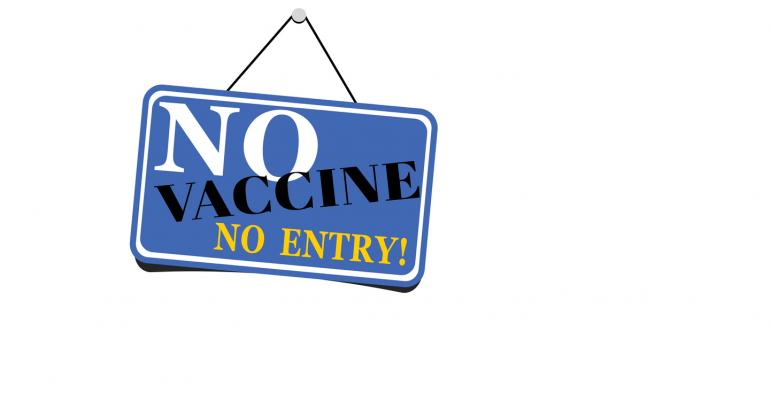Part two in our six-part feature on executing an event vaccine mandate.
Looking back at the execution of a vaccine mandate for the 19,000-attendee HIMSS21 conference in August, Karen Malone, vice president of meetings for the Healthcare Information and Management Systems Society, and her colleague Anthony Maggiore, director, meeting services, see their pre-event processes as critical to getting attendee buy-in.
Here are six suggestions they have for building participants’ understanding of the mandate, and, ultimately, driving compliance.
Enlist Medical Experts
“The first thing we did was establish an external medical expert panel for guidance on all things health and safety,” Maggiore says. The panel included clinicians who could speak on the Covid virus as well as health-technology experts who to consider the right tools to put the plan in place.
Write Broad Terms and Conditions
HIMSS 21 opened registration months before announcing vaccinations would be required. Registrants signed off on terms and conditions that were broad enough to give organizers flexibility in their final health-and-safety protocols, including vaccine mandates. (Read the conditions here.)
Check the Calendar
Before announcing a vaccine mandate, Maggiore advises planners to consider the cancellation implications for registrants who may no longer want to attend in person. Besides conference cancellation rules, consider hotel cancellation policies, and make sure you're giving people enough time to get their money back. Additionally, says Maggiore, “If you are going to mandate vaccination, you need to give people enough time to get vaccinated. As we all know, it's about a three- to four-week process from beginning to end.”
Build a Clear Communication Plan
“Nobody loves copy-heavy messages. Keep communications concise and simple” but at the same time very specific and transparent, says Maggiore, referring to both email communications and website messaging. For example, he advises planners to be specific about which vaccines you will accept, and whether you will accept mixed vaccines (e.g. first shot Pfizer, second shot Moderna) to avoid any confusion on site.
HIMSS designed an online Health and Safety Hub with links to right-of-entry protocols, mask rules, exhibitor guidelines, an FAQ, and more. The Hub was also where HIMSS posted up-to-date communications, Maggiore says. “If a development happened with Covid or with the City of Las Vegas or Clark County, that's where we provided those immediate updates.” The Hub also included a video outlining the protocols once attendees arrived on site.
Make No Exceptions
Malone says that having no gray areas in the vaccination rule was a “saving grace.” HIMSS, she said, had a clear line of delineation: You’re either fully vaccinated or not; you can come or you can't.” In fact, a speaker who flew in from abroad for the conference was turned away because she was not vaccinated fully, Malone noted.
Stay Current
“It's really, really important to stay abreast of all local regulations as well as health-and-safety procedures for vendors and suppliers,” says Maggiore. “One size doesn't fit all when it comes to states within this country; every state is doing its own thing, even down to a county level, so make sure you have Google Alerts on so that you understand what the rules and regulations are for vaccine mandates, mask mandates, and all things COVID related.”
Understand Your Suppliers’ Protocols
“It's really important to know what your vendors and suppliers are doing. Some may be mandating vaccination for all employees. Others might be doing testing the day before people start working on the show. Others might simply be doing temperature screening,” says Maggiore. While event hosts don’t have control over their suppliers’ Covid protocols unless they’ve incorporated them into the contract, understanding it helps the overall health-and-safety plan, he says, “especially in the way that you communicate it with your attendees.”
READ MORE:
No Vax, No Entry
Part 1: Introduction
Part 2: Pre-Event Communications
Part 3: Health-and-Safety Terms and Conditions
Part 4: The On-Site Vaccine Verification Process
Part 5: A Kink in the Vaccination Plan: Supplier Labor
Part 6: Vaccine Mandates: A Legal Q&A





